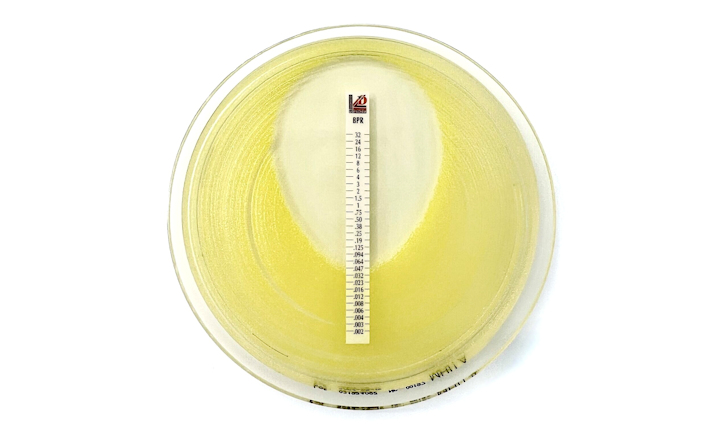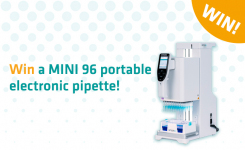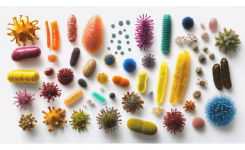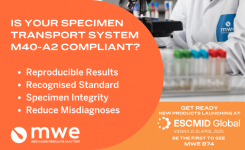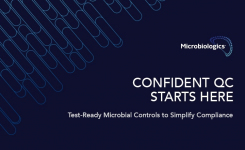The theme of this year’s WHO's World Antimicrobial Awareness Week (WAAW) is ‘Preventing Antimicrobial Resistance Together’. Running from 18th to 24th November 2022, the global campaign aims to improve awareness and understanding of Antimicrobial Resistance (AMR) and encourage best practices among the public, One Health stakeholders and policymakers, who all play a critical role in reducing the further emergence and spread of AMR one of the most challenging threats in public health.
According to a Markets and Markets report, manual, growth-based methods for AMR testing are still the main approach used, despite the shortage of skilled staff and long turnaround times (TAT), which results in generic antimicrobial therapies being prescribed and increases the spread of Antimicrobial Resistance (AMR).
Rapid and more automated antimicrobial susceptibility testing (AST) has been available for many years; in this rapidmicrobiology special focus, we explore some practical solutions for labs to implement both conventional and novel approaches. Discover Copan's Radian® with it's flexible, cost-effective, fully automated workflow for disk diffusion with just a 4-hour incubation, now not only available for positive blood cultures but also for other critical samples.
See Liofilchem's extensive range including ComASP® (Compact Antimicrobial Susceptibility Panels) broth microdilution panels which deliver real MIC results according to ISO 20776-1:2019 for antimicrobial agents that are indicated by international guidelines to be used in broth microdilution standard.
The Rapid ESBL NP® test is an 8-test panel used for the identification of ESBL producers among Enterobacteriaceae. A panel allows the ESBL detection of 8 different isolates.
The RapidResa Polymyxin Acinetobacter NP® test is again an 8-test panel containing desiccated biochemical substrates for rapid detection of colistin-resistant/-susceptible Acinetobacter baumannii isolates. A panel allows the testing of eight (8) different isolates.
Liofilchem also produces a variety of chromogenic culture media for detecting antimicrobial resistance mechanisms: Super CAZ/AVI, Colistin, ESBL, CRE, OXA-48, VRE, MRSA, Chromatic Mueller Hinton.
CondaLabs offer a complete range of media and antibiotic discs including the CondaChrome® Antimicrobial Resistance Series: chromogenic culture media for the detection of the most common resistances (MRSA, VRE, KPC...).
Automated reading provides interpretation and data traceability; the BIOMIC V3 reads and interprets a variety of manual AST methods, including Disk Diffusion, Broth Microdilution, and MIC Strips are compliant with CLIA/EUCAST guidelines.
bioMérieux's SPECIFIC REVEAL® Rapid Antimicrobial Susceptibility Test (AST) System has been given FDA Breakthrough Device Designation and will streamline the process for blood culture infections.
INTERSCIENCE's Scan 4000 is an ultra HD inhibition zone reader. It has been designed for the pharmaceutical industry, medical research and animal health. It reads 120 mm square dishes and round dishes up to 150 mm.
Solutions for Antimicrobial Susceptibility Testing
Liofilchem develops and produces a wide variety of devices for antimicrobial susceptibility and resistance testing including MIC determination, AST with agar diffusion, agar dilution, broth microdilution, chromogenic media, and rapid phenotypic tests.
Find Out More
Radian® Rapid AST: Above and Beyond Positive Hemocultures
After launching Radian’s fully automated disk-diffusion Antibiotic Susceptibility Testing and offering Rapid AST for positive blood cultures, Copan now brings Rapid AST advantages to other critical specimens to ensure accurate therapy indications in as little as four hours.
Find Out More
A Galaxy of Colonies With a Clear View
Scan 50 pro is a manual colony counter with HandPad and multiple ergonomic supports for improved posture, vision and hearing. It offers contrasted lighting of the colonies while protecting the eyes. The export of the counting result, by USB to a computer, ensures the traceability of the data.
Find Out More
Ultra HD Inhibition Zone Reader - Unequalled Image Quality
Scan 4000 is an ultra HD inhibition zone reader. It has been designed for the pharmaceutical industry, medical research and animal health. It reads 120 mm square dishes and round dishes up to 150 mm. Scan 4000 also counts colonies on Petri dishes.
Find Out More
MIC Broth Microdilution Plate Reading with EUCAST & CLSI Guidelines
BIOMIC V3 provides automated image analysis reading and interpretation for a variety of manual AST methods including Disk Diffusion, Broth Microdilution, MIC Strips, and more.
Find Out More
Condalab is Your Ally For The Analysis of Resistant microorganisms
At Condalab, you can find products for antimicrobial-resistant microorganisms analysis, from chromogenic culture media to traditional media and antibiotic discs for MIC determination.
Find Out More
FDA Breakthrough Device Designation for SPECIFIC REVEAL® Rapid AST System
The FDA breakthrough device designation will streamline the process for bioMérieux to bring hospitals across the United States a means to more rapid care for patients suffering from blood infections.
Find Out More
Added Medical Value with Urine Sample Results Up to 8 Hours Faster
Discover faster time to results with new URINE FLOW using CHROMID® CPS Elite Media. When used with WASPLab® with PhenoMatrix™, CHROMID® CPS Elite media Early Reading facilitates urine workflow in just 10-12h.
Find Out More
















